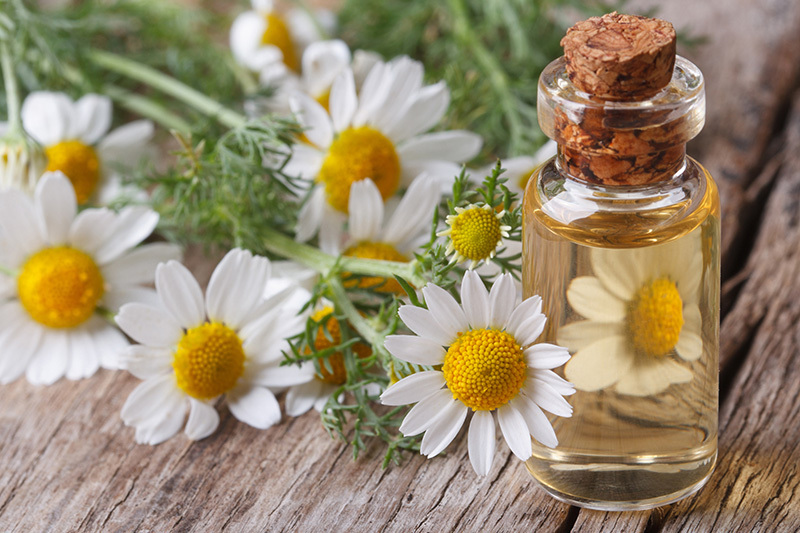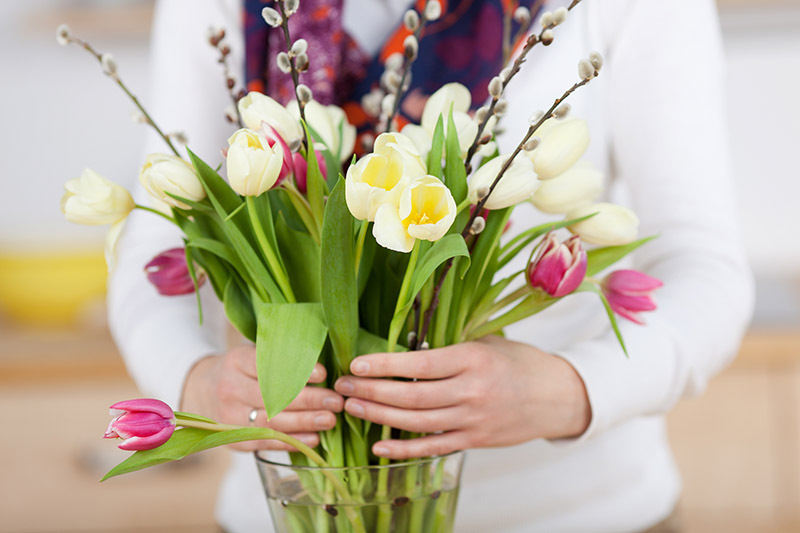Keeping Your Orchids Happy and Healthy
Posted on 22/08/2025
Keeping Your Orchids Happy and Healthy: The Ultimate Guide
Orchids--with their remarkable beauty and diverse varieties--are among the most beloved houseplants in the world. But achieving thriving, healthy orchids can be a challenge for even experienced gardeners. This comprehensive guide will help you master every aspect of keeping your orchids happy and healthy, ensuring these elegant plants flourish and bring joy to your home for years to come.
Understanding Orchids: An Overview
Orchids represent one of the largest and most diverse plant families, encompassing over 25,000 species worldwide. Their exotic flowers, striking foliage, and adaptability have contributed to their widespread popularity.
Why Orchids Need Special Care
- Unique Growing Conditions: Unlike many houseplants, most orchids are epiphytes, meaning they grow on trees or rocks in the wild, not in soil.
- Sensitivity to Environment: Orchids are highly sensitive to changes in light, temperature, and humidity. Their happiness depends on your attention to detail.
- Special Watering Needs: Incorrect watering is the number one cause of unhealthy orchids.

Choosing the Right Orchid for Your Home
Before you can keep your orchids happy and healthy, choose a species that will thrive in your specific living environment.
Popular Orchid Varieties for Beginners
- Phalaenopsis (Moth Orchid): Easiest to grow indoors; blooms last for months.
- Cattleya: Famous for stunning, fragrant blooms.
- Dendrobium: Hardy and versatile, with lovely, upright sprays of flowers.
- Oncidium: Known as "dancing lady" orchids for their impressive sprays of yellow blooms.
Factors to Consider
- Light: How much natural light does your space get?
- Temperature: Can you provide day and night temperature variations?
- Humidity: Is your home naturally humid, or will you need to supplement?
- Space: Do you have room for larger orchids or do you prefer compact varieties?
Optimal Growing Conditions: Meeting Orchid Needs
Achieving healthy, happy orchids starts with understanding their basic needs. Let's break down the essential components:
1. Proper Lighting
Orchids need bright, indirect light to thrive. Direct sun can scorch delicate leaves, while too little light leads to poor growth and few blooms. Here's how you can ensure your orchid's happiness with correct lighting:
- Place orchids near east or west-facing windows for gentle morning or afternoon sun.
- If light is insufficient, consider using grow lights designed for orchids.
- Leaves should be bright green--not dark (too little light) or yellowish (too much light).
2. Temperature Control
To keep orchids healthy and happy, replicate their natural environment:
- Most orchids flourish between 18?C to 27?C (65?F to 80?F) during the day and 10?C to 18?C (50?F to 65?F) at night.
- A difference of about 10?F between day and night helps promote flowering.
- Avoid sudden temperature swings, cold drafts, and heat from radiators.
3. Humidity Requirements
Orchids love humidity! Their roots absorb water vapor from the air. Aim for:
- 40-60% humidity for most common varieties.
- Increase humidity with pebble trays filled with water, room humidifiers, or frequent misting.
- Provide air circulation to prevent mold and fungus--use a fan if needed.
Watering Wisdom: The Heart of Orchid Health
Improper watering is the main cause of unhappy orchids. Mastering this aspect will keep your plant vibrant and resistant to disease.
When and How to Water Orchids
- Check the roots: Only water when roots and bark feel almost dry.
- Water thoroughly: Allow water to flow through the pot and drain completely--never let the orchid sit in water.
- Use tepid water: Room temperature water is kinder to orchids' roots.
- Water less in winter: Growth slows down and so should your watering frequency.
Tip: Err on the side of underwatering. It's easier to revive a thirsty orchid than an overwatered one!
Signs of Incorrect Watering
- Yellow, mushy leaves: Sign of overwatering or root rot.
- Wrinkled, leathery leaves: Indicates under-watering.
- Stagnant water: Always empty saucers to avoid root suffocation.
Feeding Your Orchids: Fertilization for Happiness
Even the best cared-for orchids need nutrition. Unlike other plants, they absorb most nutrients through their roots from rain and decaying debris in the wild.
How to Fertilize Orchids Effectively
- Use a balanced, water-soluble orchid fertilizer.
- Apply at half-strength--more is not better.
- Fertilize "weakly, weekly" during active growth.
- Stop or reduce fertilizing while orchids are dormant.
- Rinse the potting media with clear water monthly to prevent salt build-up.
Note: Over-fertilization is as damaging as underfeeding. Too much can burn orchid roots!
Repotting Orchids: When and How to Do It
Orchids need to be repotted every 1-3 years to remain in peak condition.
Signs Your Orchid Needs Repotting
- Roots growing out of the pot
- Potting media breaks down or smells musty
- Water runs through too quickly or pools up
- Bare or unhealthy-looking roots
Repotting Steps
- Gently remove the orchid from its current pot--never force it!
- Trim away any dead or mushy roots with sterilized scissors.
- Use fresh, well-draining orchid bark or sphagnum moss.
- Place orchid in a slightly larger pot--not too big!
- Water lightly after repotting and return to its optimal spot.
Identifying and Treating Common Orchid Problems
Even with the best care, issues sometimes arise. Early identification is key to restoring orchid health.
Common Orchid Pests
- Mealybugs and scale: Treat with insecticidal soap or by wiping with an alcohol-soaked cotton swab.
- Aphids: Spray with water or use neem oil.
- Spider mites: Increase humidity and wash leaves; use miticide if necessary.
Disease Prevention and Treatment
- Root rot: Caused by overwatering and poor drainage. Repot, trim away bad roots, and improve watering practices.
- Botrytis (gray spots on petals): Remove affected blooms and boost air circulation.
- Leaf spots or wilting: Indicate bacterial or fungal infections; isolate affected plants and use an appropriate fungicide.
Prolonging Blooms and Enjoyment
One of the paramount pleasures of orchid care is enjoying their stunning, long-lasting blooms.
Tips for Encouraging and Prolonging Orchid Flowers
- Meet light and temperature needs: Both are vital for triggering re-blooming.
- Maintain a regular care schedule: Consistency equals more reliable flowering cycles.
- Don't remove healthy leaves: Leaves store energy needed for blooming.
- After flowers fade: Cut the flower spike back to a healthy node to encourage new spikes (especially with Phalaenopsis).
Advanced Orchid Care: Tips for Enthusiasts
Ready to take your orchid health to the next level? Try these strategies:
- Experiment with varieties: Once confident, try more challenging types like Vanda or Miltoniopsis (pansy orchid).
- Cross ventilation: Ensures strength against pests and disease.
- Humidity trays: Create a microclimate for groups of orchids--great for advanced displays.
- Monitor and log conditions: Beginner-friendly apps can help track humidity, light, watering, and temperature.

FAQs About Keeping Orchids Happy and Healthy
How long do orchids typically live?
With proper care, many orchids can live for decades, producing blooms every year.
What are the best pots for orchids?
Choose pots with excellent drainage--clear plastic orchid pots or clay pots with side holes are ideal.
How often do orchids flower?
Most common orchids, like Phalaenopsis, bloom once or twice a year, with flowers lasting from several weeks to months.
Can I grow orchids outdoors?
Yes, in suitable climates (generally USDA zones 9-12). Ensure shade, protection from rain, and proper air movement.
Why are my orchid leaves turning yellow?
This can signal overwatering, underwatering, excessive light, or natural leaf aging. Diagnose by checking roots, light levels, and watering routine.
Conclusion: Success with Keeping Orchids Happy and Healthy
Keeping your orchids happy and healthy is a deeply rewarding pursuit. These spectacular plants may seem fussy at first, but with knowledge and a little practice, their care becomes second nature. Focus on consistent light, temperature, humidity, watering, and nutrition, and your orchids will reward you with years of beauty and blooms.
Remember: observe your orchids regularly and respond to their needs. In time, you'll become attuned to their rhythms and able to troubleshoot any problems before they become major issues. With a little extra love, your orchids will not just survive, but truly thrive--becoming a source of pride and joy in your home.
- Choose species suitable for your home.
- Master proper watering techniques.
- Provide sufficient light and airflow.
- Feed and re-pot as needed.
- Stay vigilant against pests and disease.
Your journey toward healthy and happy orchids starts now--enjoy every step!
Latest Posts
Year-Round Hydrangea Care: Keeping Them Radiant
Chic Office Plant Options for the Time-Strapped
Keeping Your Orchids Happy and Healthy






